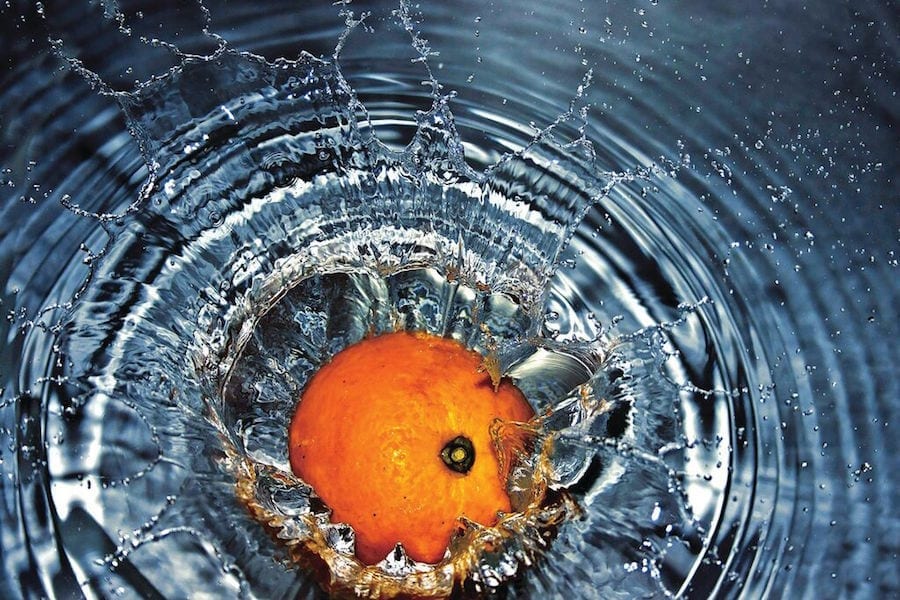Vitamin IV therapy claims a boost in health and beauty
By Abby Deering
Apitherapy, the painful and ancient technique of being voluntarily stung by bees to reduce inflammation and scarring of the skin, is one of the many zany health and beauty procedures touted by Gwyneth Paltrow, who in the past decade has re-branded herself as a domestic-goddess and wellness pioneer. Her lifestyle website, Goop, has come under fire for doling out tips and advice that are seemingly out-of-touch, elitist, and in some cases, worryingly unfounded.
At Paltrow’s inaugural wellness summit, “In Goop Health,” held in Los Angeles this past June, panelists spoke on an array of topics ranging from parasite therapy to orgasmic meditation to the potential risks of broccoli and kale. Celebrity pals such Cameron Diaz and Miranda Kerr joined the Goop queen onstage to discuss their own health and beauty journeys. (Kerr shared a particularly descriptive tale of a leech face-lift she received involving her coccyx.)
Outside of the panels, attendees sipped on collagen-infused martinis while partaking in a range of experiences such as crystal therapy and aura photography. The IV Drip Station, also on offer, seemed a rather tame and conventional therapy by comparison.
IV vitamin therapy, also known as Intravenous Micronutrient Therapy (IVMT), is the method of delivering essential vitamins, amino acids and minerals directly into your bloodstream. It became in vogue a few years back after several well-publicized celebrity endorsements. In 2012, Rihanna tweeted a photo of an IV in her arm after she felt sick following the Met Gala; and in 2015, Sofia Vergara hired an IV Station for guests at her three-day wedding extravaganza in Palm Beach. Singers Madonna and Adele are both regular users of the vitamin drip, as is a reality star who’s named shall not be mentioned on these pages (hint: initials are double K).
However, unlike some of the more esoteric practices of Paltrow, Kerr and company, IV vitamin therapy is one celeb fad that is increasingly gaining traction in the mainstream health and beauty markets. From Anchorage to Tuscaloosa, IV drip bars and medspas are becoming as commonplace as barre studios in cities and towns across the U.S.
Administering life-boosting fluids via intravenous drip is nothing new. One of the first recorded instances was in the 1600s when an Oxford scientist created an intravenous device using a pig bladder and quill. In hospitals, IV therapy has been used for decades to treat conditions from dehydration to nutrient-absorption disorders.
Using IV therapy as a method of delivering vitamins and nutrients directly into the bloodstream was popularized in the 1960s when Dr John Myers, an internist from Johns Hopkins Hospital in Baltimore, created what is known as the Myers Cocktail. The key ingredients in the cocktail include: vitamin C, numerous B vitamins, calcium and magnesium. This holistic therapy, adopted by naturopathic doctors, was proven by the National Institute of Health to be an adjunctive treatment for chronic illnesses such as fibromyalgia, fatigue, depression, cardiovascular disease, asthma, and migraines, among others.
However, in 2010 when commercial IV clinics first burst onto the scene using techniques adopted from the medical community, hydration was the main focus. Think runners post race or those suffering after a marathon night of drinking. Treatments with names such as “The Party Girl Drip” began cropping up in cities known for hard partying. In 2011, Las Vegas became home to the purported first-ever mobile hangover clinic, the Hangover Heaven bus.
In recent years, there has been a shift from marketing to the severely dehydrated or sick towards those seeking extreme beauty and health. In spa-like settings, with massage chairs and iPads, commercial IV spas and mobile IV services are now offering vitamin infusions that can diminish jet lag, improve sexual and athletic function, boost immunity and nutrition, increase metabolism and energy, detoxify the body, counteract the effects of aging and enhance skin, hair and nails.
In essence, there’s been a sort of return to the Myer’s Cocktail. Now however, the basic formula is being customized by adding other nutrients to address specific needs. Nowadays, IV therapy spas allow you to choose from a menu of pre-crafted vitamin cocktails, each containing a different combination of vitamins depending on one’s needs.
Alternatively, in true pick-and-mix fashion, you can craft your own infusions, starting with a base fluid (usually a solution of saline and lactated ringers) and then choosing from a list of vitamin, mineral and amino acid “add-ons,” including: B12 complex, good for a quick energy boost and great for hair, skin, and nails; High doses of vitamin C, which prevent stress and fatigue, supports immune health and brightens skin; Glutathione, an anti-oxidant that treats fatigue, depression and other chronic symptoms; MSM, an amino acid used for pain relief; Sodium bicarbonate (aka baking soda) which improves detoxification and decreases inflammation and symptoms of acid reflux; or a punchbowl of multivitamins, ranging from A to Zinc, which can be used to replenish general vitamin deficiencies.

Treatments last anywhere from 30 minutes to an hour, and practitioners of IV vitamin therapy say it’s the fastest and most effective way to put vital nutrients into the body and get the most out of them. (Studies say 95 percent of liquid vitamins injected intravenously are absorbed into the body, compared to 20 percent of vitamins taken orally.) When nutrients are given intravenously, your digestive system is bypassed and a much higher level of nutrition can be delivered directly to your cells. Vitamin C, for example, the so-called natural alternative to Botox, is immediately available for cellular use when you infuse it directly into the veins.
However, the same amount would cause GI upset if you tried to take it by mouth.
That said, there’s plenty of skepticism in the medical world surrounding IV infusion. With basic treatments starting at around $75 and rising to as much as $1,000 for complex nutrient blends, many professionals in the medical community have suggested that these therapies are being overly-promoted for their profit potential. Furthermore, doctors caution that it can be a mistake to assume something that feels good in the short term is necessarily good for you in the long term, and that overly high doses of supplements can have severe health consequences. (Such treatments haven’t been tested or evaluated by the US Food and Drug Administration and there are no studies on the long term effects of this kind of therapy.) They warn that by infusing vitamins directly into your veins and circumventing the GI system, you are also bypassing the natural safeguards of the digestive system —from antibodies in the saliva to those in the liver — that filter out potentially harmful molecules that could cause an allergic reaction.
There have also been challenges to the claim that, despite eating the right things and exercising on a regular basis, vitamin deficiencies can still occur. Instead, many doctors argue in favor of a health and wellness regime that requires patience and is thoughtful, slow and methodical. Many stress the need to address health issues at their origin, whether it’s poor diet, not enough exercise, too much alcohol, dehydration, lack of sleep or too much stress.
Ultimately, IV vitamin therapy as a means of achieving extreme health and beauty is here to stay, so it’s important to approach this therapy as an adjunct treatment and not the solution, and to carefully vet the business and professionals offering the service. Always get an infusion on a drip, rather than a pump, which can be left unmonitored and deliver too much. If somebody is sitting there and squeezing the bag, they’re trying to get you in and out. This is not advisable. As the number of mobile IV therapy businesses offering in-home services continues to grow, it is important to steer away from operations with a makeshift or unprofessional vibe and instead opt for those that maintain a clinical approach while providing comfort.


